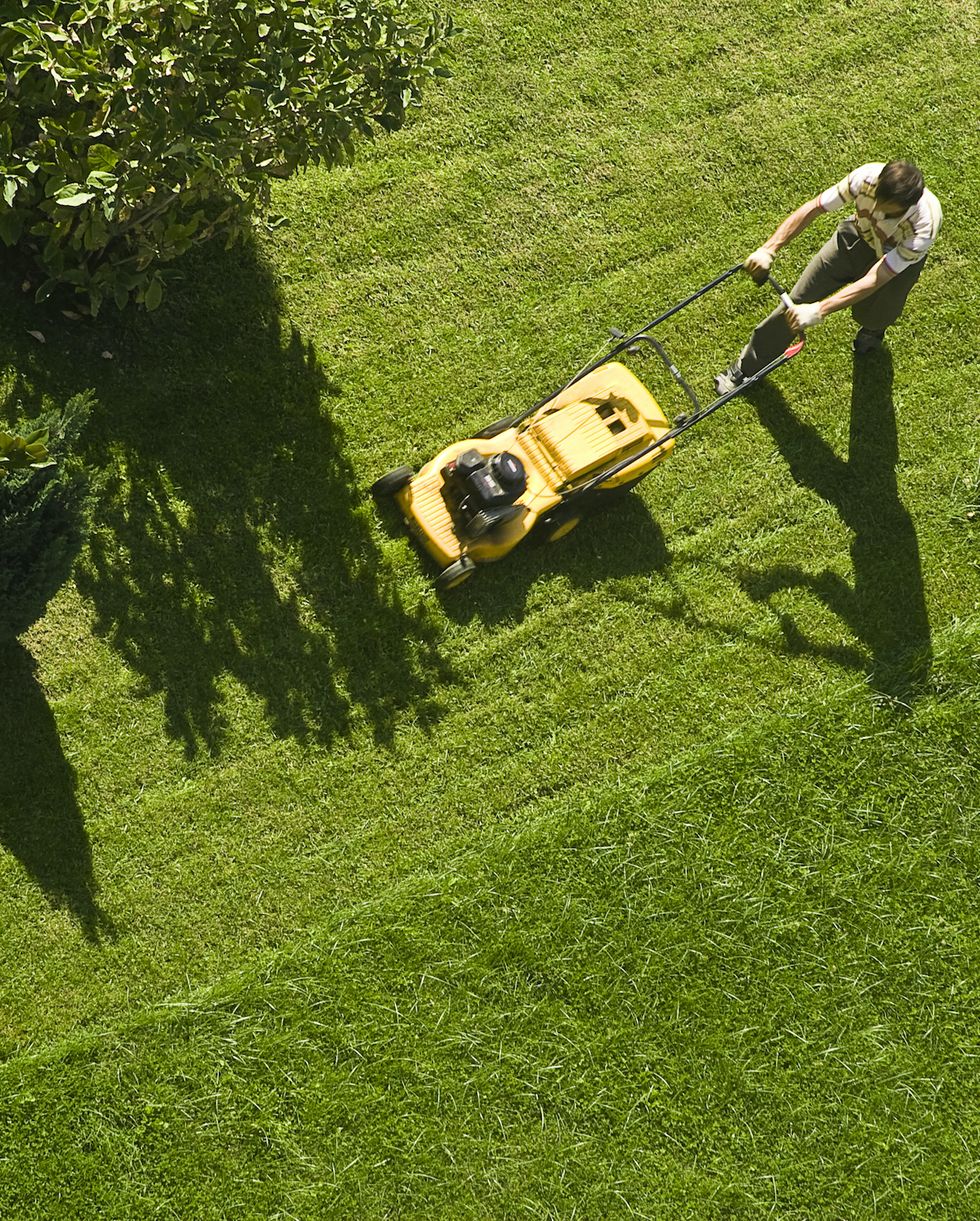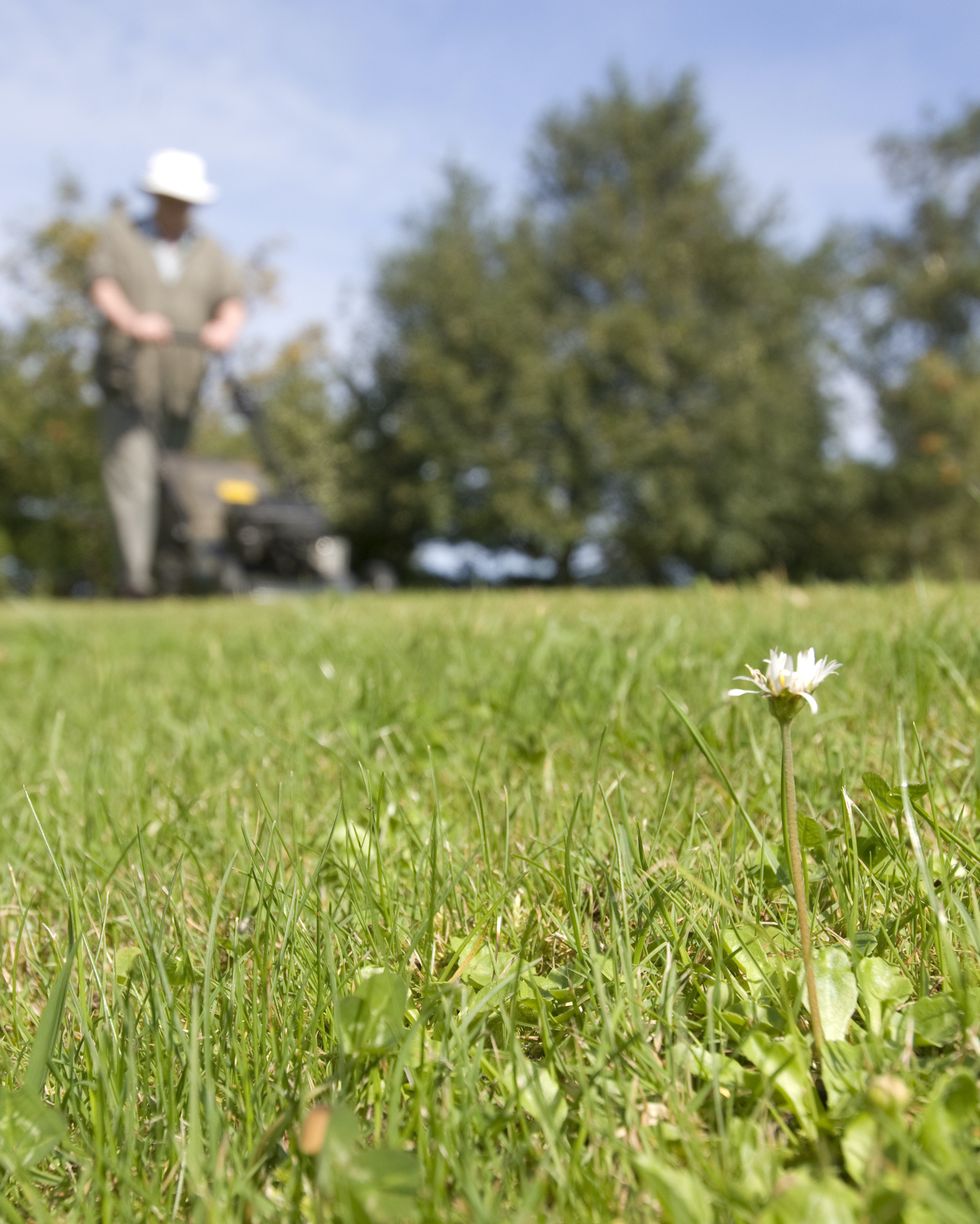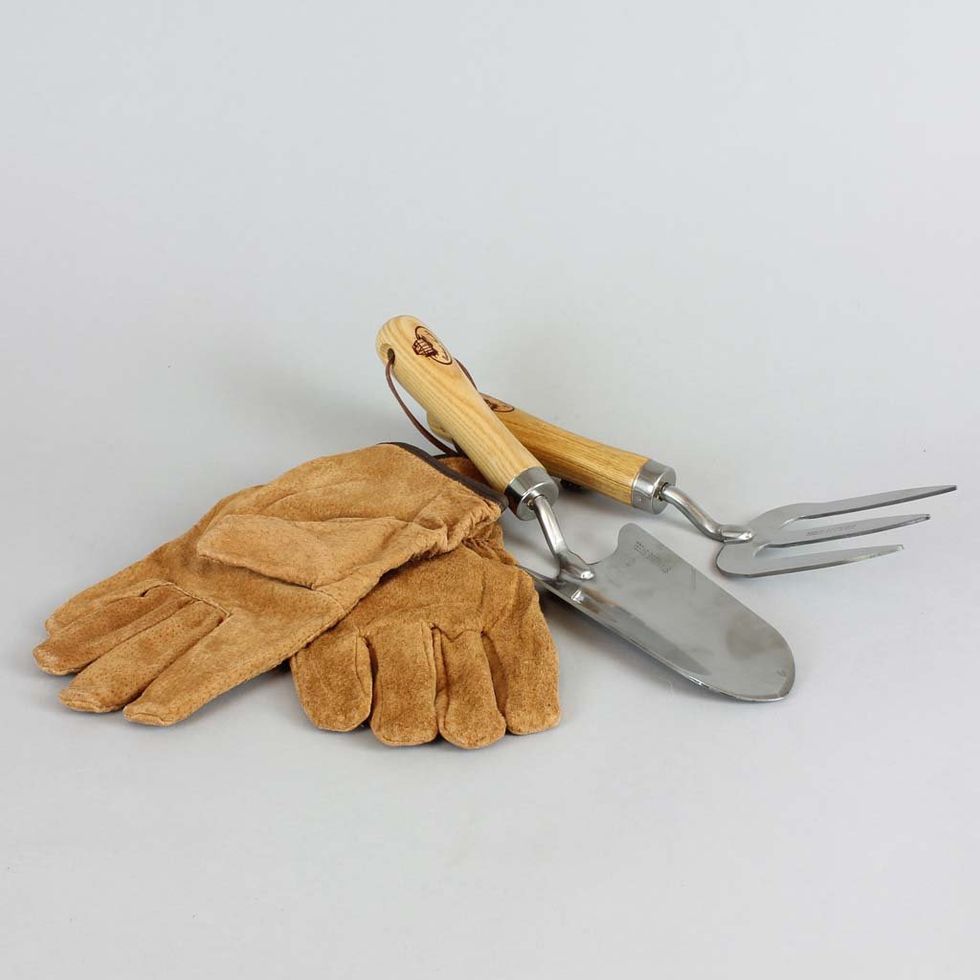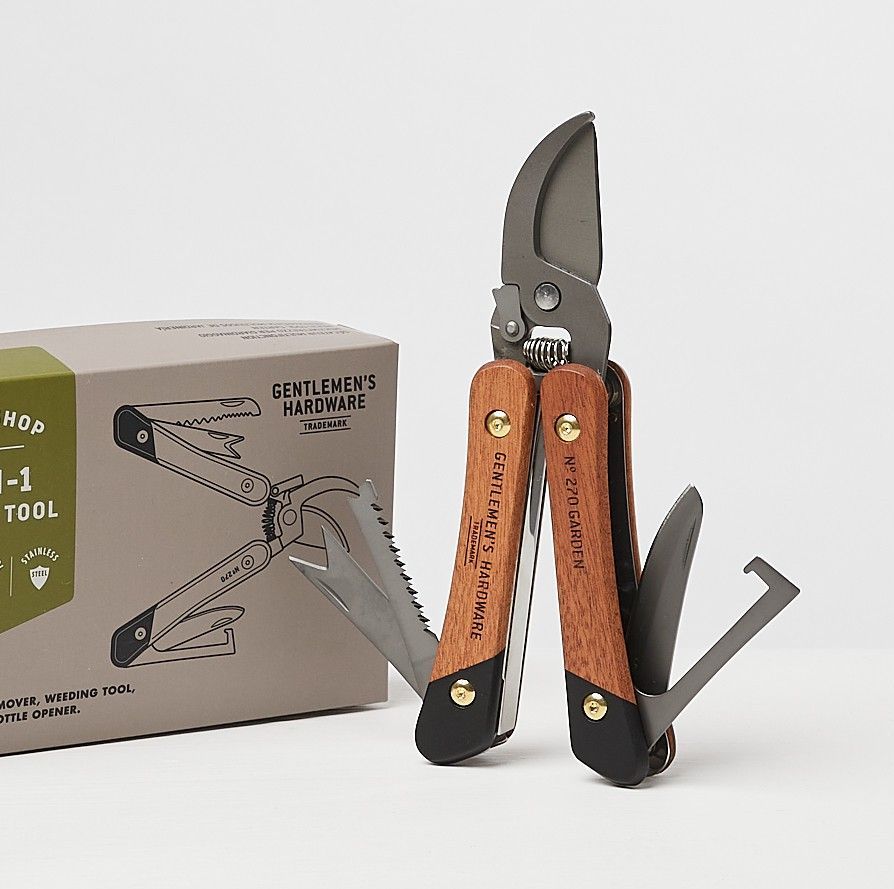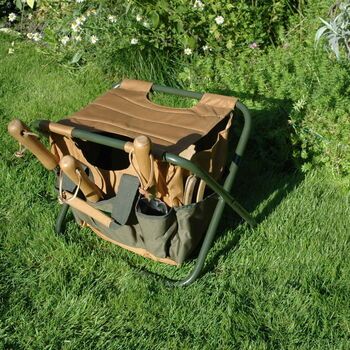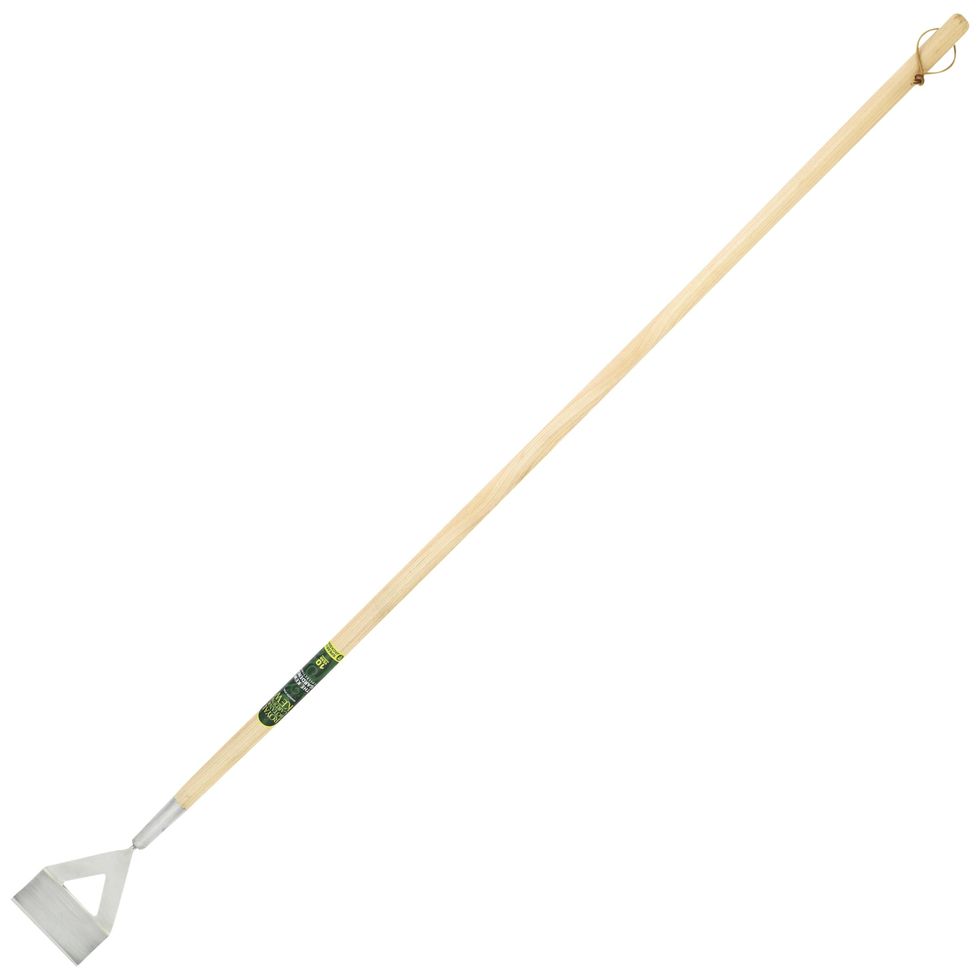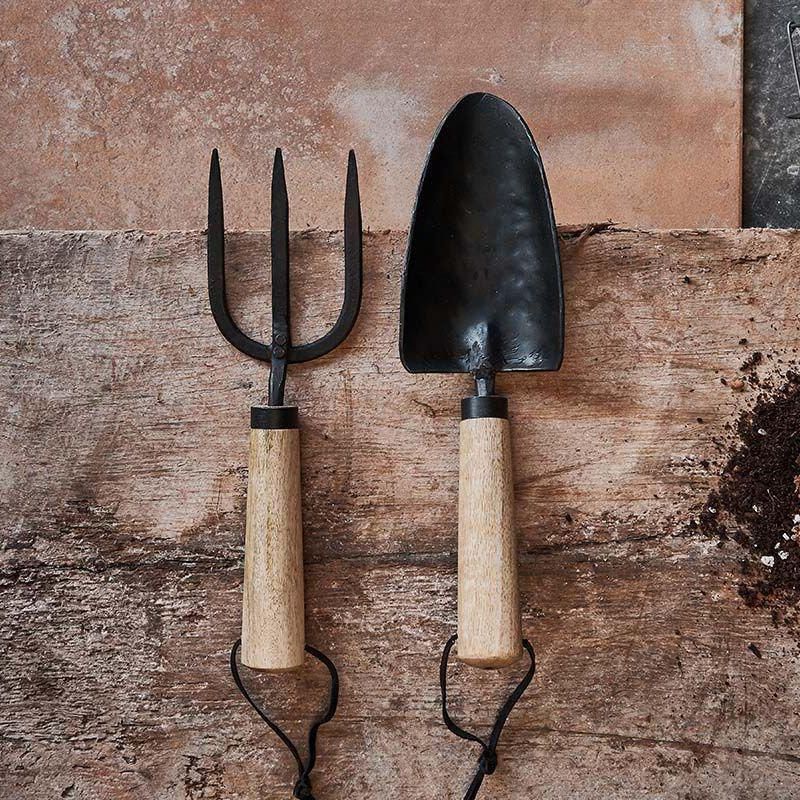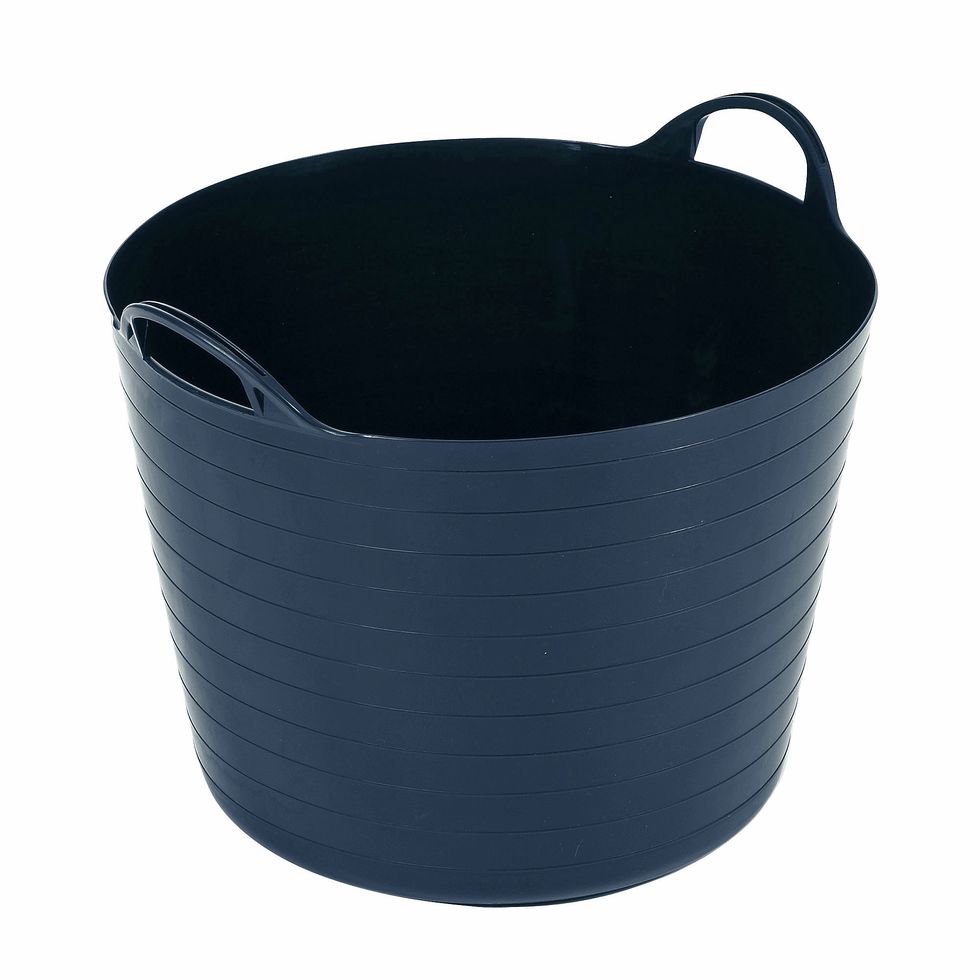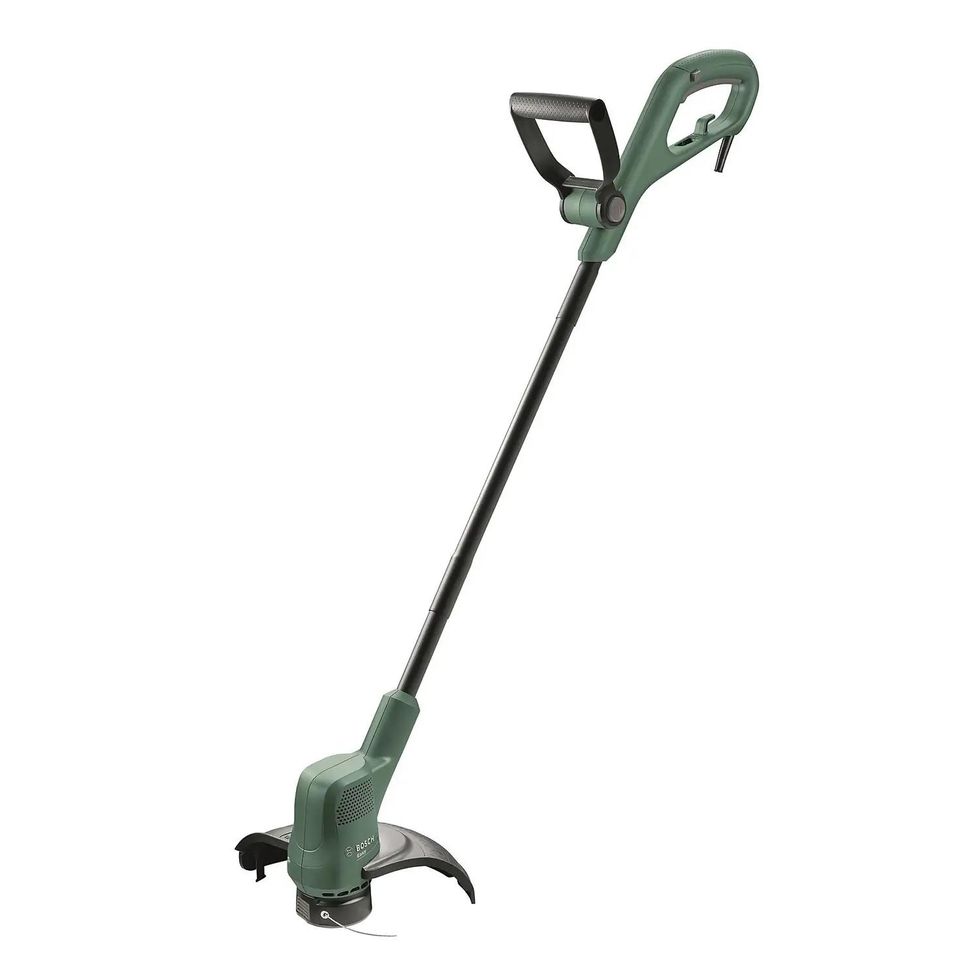February might feel like the first real hint of spring – the days are getting longer, the bulbs are pushing through, and there’s a definite urge to get back out in the garden.
But is your lawn really ready for its first cut of the year, or should you hold off a little longer?
Can you cut grass in February?
“Grass grows according to the temperature. It will start growing once the weather is above 5C, so if you’re confident that there are no more frosts on the way, you can pull out the mower and get to work,” Managing Director of Wilkinsons Landscapes and RHS award-winning horticulturist, Simon Wilkinson, tells Country Living.
“I would err on the side of caution and wait it out; the last thing you want is to damage your grass early on in the year and put up with a damaged lawn for the peak weather when you want to be outside and enjoying your garden. I generally advise waiting until March when temperatures are consistently above 5C.”
When should you mow the lawn for the first time that year?
Temperature-aside, below are some other other things to consider before reaching for the lawnmower, and how to know when the time is right…
Look for signs your lawn is ready
The grass is ready for its first proper mow when:
- The grass has a nice green colour to it
- It has begun growing
- It reaches about three inches in height
- The ground is firm and dry
“Your first cut should always be on your mower’s tallest setting to get it at an even height after its first growth spurt. After that, give it a couple of weeks, then you can cut it to your preferred setting,” Simon advises.
Avoid mowing in cold or wet conditions
Simon warns that mowing too soon, particularly when the ground is still wet or frost is forecast, can do more harm than good.
“Mowing in the frost is absolutely the worst thing you can do for grass – it can cause patchiness and bald spots on your lawn, which will take a long time to fill in and recover. The empty patches also give a home for weeds, especially those with air-carried seeds like dandelions, to take hold.”
Prepare your lawn and mower first
A little preparation goes a long way when it comes to getting your garden ready for spring:
- Walk your lawn and remove debris like leaves and twigs
- Pull up any visible weeds
- Check your mower before use:
- Petrol mowers: Ensure old fuel is emptied and replaced, and consider servicing the machine
- Electric mowers: Sharpen or replace the blades
- Battery-powered mowers: Store batteries indoors over winter to preserve their charge
After months of sitting in the shed, your lawn mower may be a little rusty. Don’t forget to check for chipped or blunt blades — these will bruise the grass. As well as this, remember to clean yours out regularly to remove a build-up of clippings. The better you take of your lawn mower, the longer it will last.
Set the right mowing height
“For the first cut, set your mower to its highest setting and trim no more than one-third of the grass’s height. After your first cut, you can gradually reduce the height over the next few weeks.”
He also recommends a technique for an even cut: “For my first mow, I always take my time to line up the mower and mow in alternative directions to get those lovely classic lawn stripes in, then go around the edge. If you do this, it’ll set up for the year ahead, and you will have a beautiful lawn fit for a country mansion.”
Avoid common mistakes
The biggest mistake most people make? Cutting too short, too soon.
“The most common mistakes I see are cutting too short, too early and skipping maintenance. You need to give grass the chance to get going, and if you cut it too short, you can pull up the dead grass from the previous season and expose the soil, opening the chance for weeds to get established,” Simon continues.
“It’s better to bide your time earlier in the year and reap the rewards of a luscious green carpet of a lawn during the summer, when you want to spend more time in your garden and hosting guests.”
Don’t mow all of your lawn
Choose the part you’d like to be neat but then let the rest stay a little messy. This is much better for wildlife and will encourage habitats to flourish throughout summer. You could even plant some wildflower seeds here and make it a real visual feature of your garden (Cornfield seed collection, BUY NOW).
“Don’t mow all of your lawn. Find a corner of your garden where you can allow it to become, dare I say it, a little bit unkempt,” implored Chris Packham during an interview with Country Living about spring gardening. “That long grass will provide food for butterflies and other invertebrates and shelter for other animals – maybe even something as exciting as a hedgehog.”
Cut fortnightly in spring
According to the RHS, you should mow your lawn once a fortnight or once a week in spring. While growth is good, regular cutting will help to keep your lawn neat and in good condition. Regular mowing helps to eliminate weeds and encourage denser ground.
Consider a mowed path
In the spirit of helping wildlife, do you need a whole area to be mown or could a pathway leading through your wildflowers be enough? Remember that a rich garden ecosystem can keep pests under control naturally.
Have a pre-cut tidy
After months of being starved of sunshine, your garden may look a little neglected. It’s important, before your first grass cut of the year, to take time to clear any mess around the area you wish to mow, including dead sticks, leaves and any rubbish that may have gathered.
Check to see what is hiding in the garden; the likes of stones and thick branches may have made their way into the overgrown lawn and if the lawnmower catches these, it can damage the mower blade. Keeping the mower blade sharp is vital as the damage a dull blade can cause could be detrimental to the grass.
Don’t get rid of what you’ve collected. Add it to your wilder area as natural debris makes great habitats for wildlife.
Check for nesting animals
Check the area you are about to mow for any animals that might have made it their home during winter. Hedgehogs can often be found in piles of grass and leaves. If you do find a habitat, consider mowing a different part of the lawn instead and leaving it be.
The Woodland Trust says: “Climate change is not only influencing our mowing regimes, it’s increasing the pressure on our wildlife too and more species are looking to our gardens for food and shelter. These mini wildlife reserves can become precious habitats for them to thrive.”
Don’t leave it too late
Although the difference in climate can vary depending on where you are in the country, research has shown that the first two weeks in April are the most popular time to dig the lawnmower out for the first grass cut of the year.
Use the one-third rule
When mowing your lawn for the first time, you should always follow the one-third rule: Never cut more than a third of the blade of grass off in one go. Cutting more than this can stress the grass.
You should gradually reduce the grass length over several weeks to reach the desired length. Cutting the grass too short, too fast, is known as ‘scalping’ which can lead to disease and weed infestation.
Flymo explains: “If your lawn has been a little unkempt throughout the colder months and has grown with a mind of its own then fear not, still follow the one-third rule but take it in stages over a number of weeks. Gradually decrease the cutting height on your lawnmower each time to reach your preferred grass length.”
And if your grass is really out of control?
If your lawn has been a little unkempt throughout the colder months and has grown with a mind of its own then fear not, still follow the one-third rule but take it in stages over a number of weeks. Gradually decrease the cutting height on your lawnmower each time to reach your preferred grass length.
But only apply this to the smaller area you’d like to maintain, as mentioned above. Embrace the wildness in the rest of the lawn and allow it to flourish.
Contour your garden
Don’t forget about the edges when cutting your lawn for the first time. Overgrown edges can look unsightly and can mean time and effort spent working in the garden has been in vain. Trim the edges straight after mowing.
Don’t water immediately after
It’s best to avoid getting into the habit of watering your lawn immediately after mowing. There is no specific point in the month to give your lawn a hose down – it should simply be done whenever it needs moisture – however, there are a few guidelines on what time it should be done during the day:
- Watering late in the evening or at night can lead to fungal problems due to the fact the grass doesn’t have time to dry out.
- The middle of the day tends to be when the sun is at its hottest, which can lead to the water evaporating instantly or the droplets acting as a magnifying glass, burning the blades of grass.
- Therefore, the best time is first thing in the morning as the air is cool and the water can travel to the roots before drying up.
Know how long to leave a new lawn before cutting it
New grass that has been grown from the seed will be noticeably weaker than the rest of the lawn and can be easily damaged if cut incorrectly. It’s best to wait until the grass has grown over three inches in length until mowing for the first time to allow it time to build up strength.
Make it a habit
Following your first cut of the season, you may need to mow the maintained part of your lawn once or twice a week to maintain the length you desire. This is due to the warm weather encouraging your garden to grow.
Choose your tool wisely
It’s important to remember that no two lawns or gardens are the same even if they are side by side. Take into consideration the condition and size of your lawn, and your gardening needs when choosing the best tool for the job. Choose an electric lawnmower over a petrol one for the more eco-friendly option.
Use the cuttings to make hay
RHS Chief Horticulturalist Guy Barter says that allowing our cuttings to turn into hay is great for seed-eating birds. He explains: “Leave the summer mown grass in place for a few sunny days to become ‘hay’ and release seeds to refresh the lawn for next year and also provide food for seed-eating birds and other wildlife. The ‘hay’ can then be removed and composted.”
Or compost your grass cuttings
“Removing and composting all grass mowings also supports wildlife by reducing soil fertility,” continues Guy. “Running down fertility, assuming no fertiliser is applied, leads to turf becoming more sparse which allows room for wildflowers, particularly clovers, and wildlife.”



